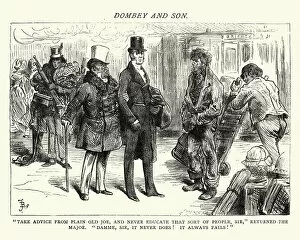Class System Collection (#17)
"Exploring the Layers of Class System: From Royalty to Laborers" In this captivating journey through time, we witness the intricate layers of society's class system
For sale as Licensed Images
Choose your image, Select your licence and Download the media
"Exploring the Layers of Class System: From Royalty to Laborers" In this captivating journey through time, we witness the intricate layers of society's class system. Prince Albert Victor, Duke of Clarence and Avondale, stands as a symbol of aristocracy and privilege. His portrait reflects the opulence and grandeur associated with royalty. Contrasting this image is Vera Mukhina's sculpture "Worker and Kolkhoz Woman, " capturing the essence of hardworking individuals who form the backbone of society. This black-and-white photograph serves as a reminder that laborers play an essential role in shaping our world. Moving further back in history, we encounter King George V in 1892, epitomizing power within his regal demeanor. The oil painting showcases his authority over vast territories during an era defined by social hierarchy. However, not all depictions revolve around nobility; some focus on leisurely pursuits enjoyed by those with means. An elegant lady gracefully rows her boat across calm waters in an oil-on-canvas masterpiece. Here we glimpse into a world where wealth affords leisurely activities amidst picturesque landscapes. Shifting gears to earlier centuries, we stumble upon frozen Antwerp quay depicted in 1622 by an unknown artist on panel canvas. This scene reminds us that even nature bows before societal divisions - freezing both rich and poor alike under its icy grip. An imaginary Renaissance palace from 1602 transports us to a realm where architecture embodies status and prestige. Elaborate designs signify wealth while emphasizing disparities between classes. The artistry continues with "Boat Builder, " painted circa 1904 on canvas - showcasing skilled craftsmen contributing their expertise to maritime endeavors despite their lower standing within society. Meanwhile, "An open-air Party" from 1615 portrays revelry amongst privileged circles - highlighting how exclusivity often defines social gatherings throughout history. Tompkins Matteson's c.



